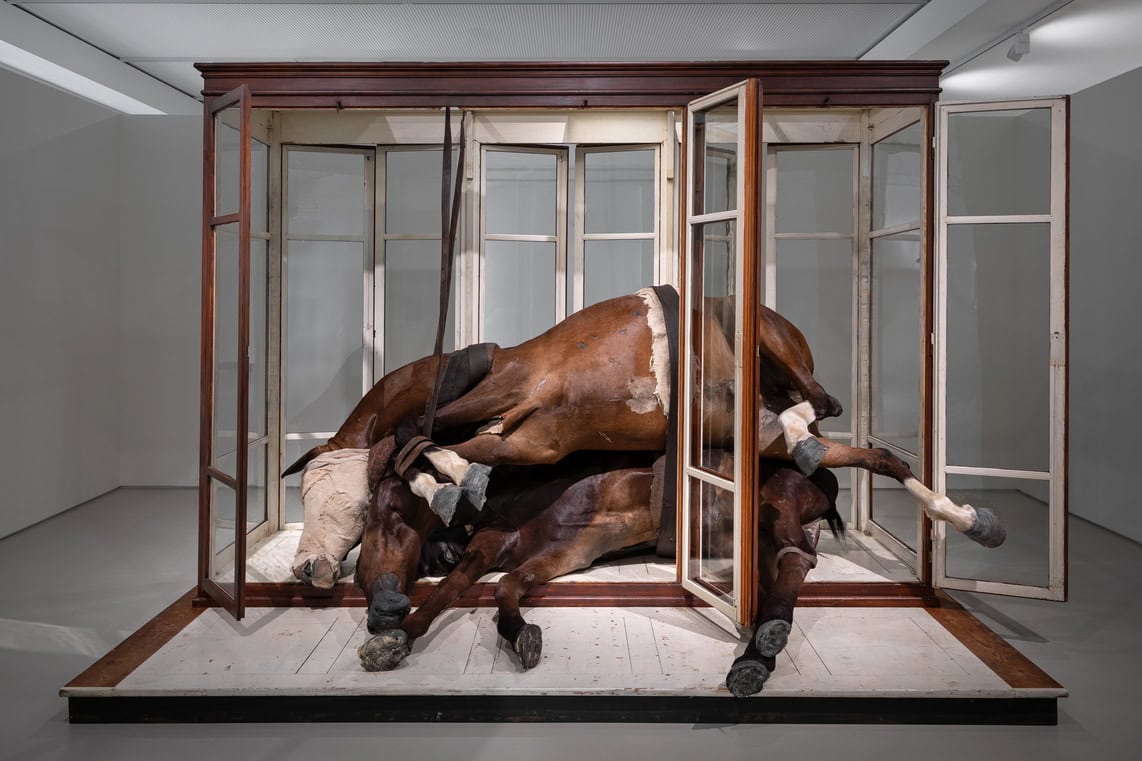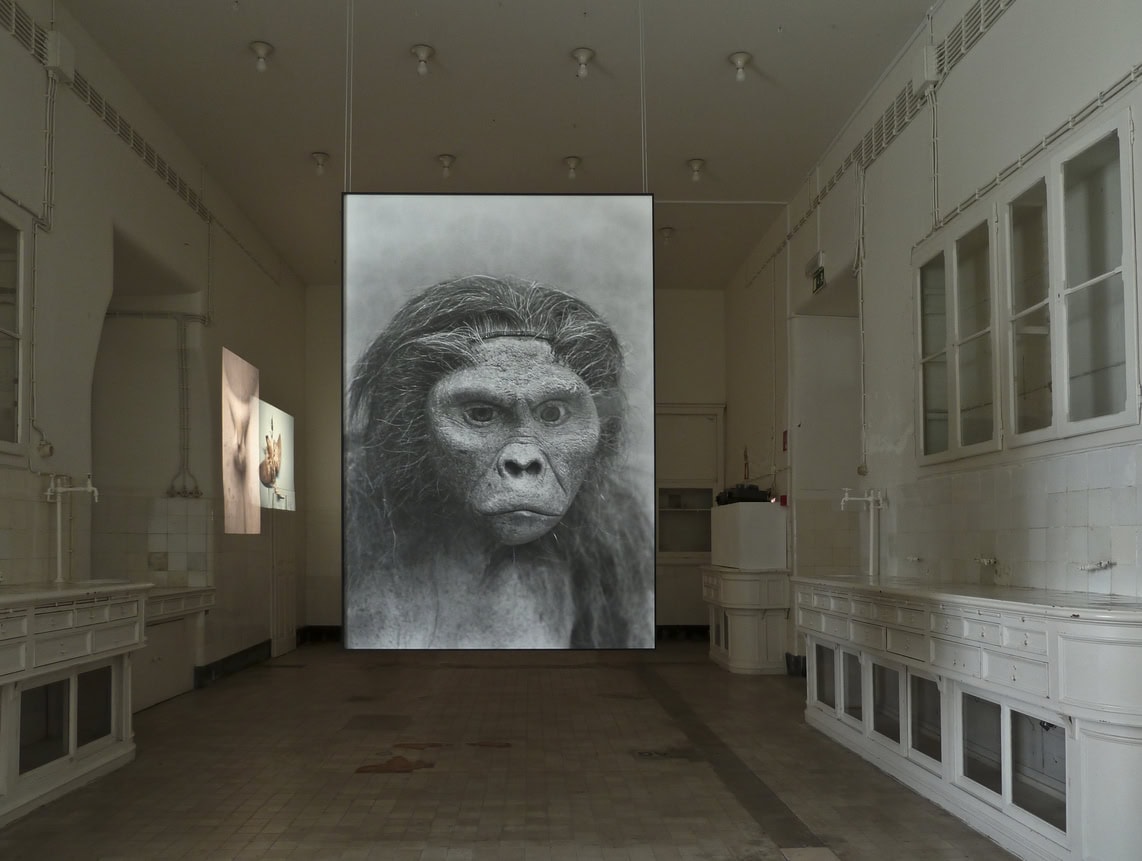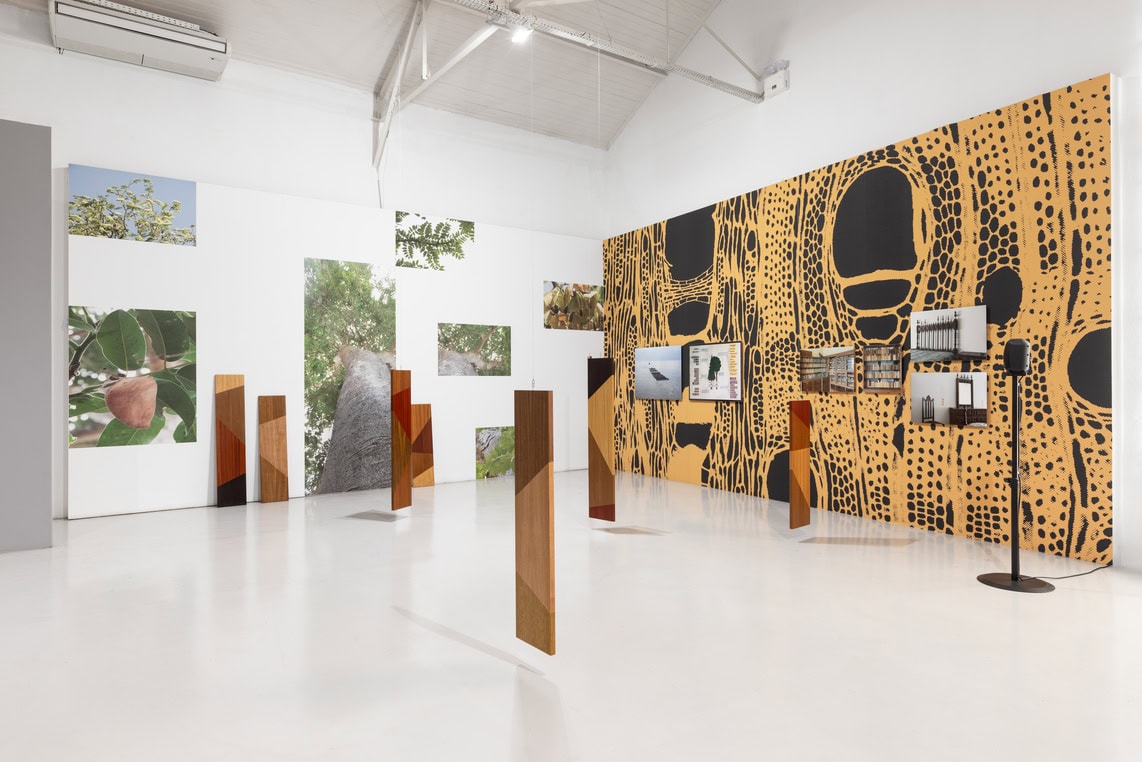In what used to be the Analytical Chemistry Lab of the old Faculty of Sciences, now repurposed as an exhibition hall within the Museum of Natural History and Science, José António Quintanilha lays out a kind of archaeology of the visible. Not one that merely peers back to the first images, but one that reaches further, to the roots of what it means to be human. His exhibition, Incipit, circles around the idea of a beginning — not as a fixed date etched in time, but as a living force that returns and reshapes itself, whether in art, in science, or in the daily strangeness of being human at all.
The two large analogue prints that make up Origens Visíveis #1 and #2 bring Lucy and her male counterpart — both Australopithecus Afarensis — back into view through museum replicas. The images carry a dense, almost skin-like texture, and with it a sense of time that brings them closer to relics than representations. What we are shown is not simply the past reconstructed, but the way it chooses to appear to us now. Lucy, that fossil icon of human evolution, becomes something of a speculative mirror. Her reconstructed face stares back; not quite familiar, but not alien either. It’s in that unsettled space between recognition and strangeness that the work takes root. Yes, the image may suggest a return to origins, but, if so, it’s a return without nostalgia. What emerges is something far more uncomfortable: the quiet, insistent question of what it means to be here at all. After all, aren’t we just a series of half-finished attempts to make sense of who or what we are?
That same question runs through Modus Operandi: Ciclos e Transitoriedade, an installation made up of two slide projectors, each loaded with eighty slides, running non-stop but out of sync. The images include human faces, classical statuary, animals, cityscapes, fragments of landscape and they follow one another like thoughts caught mid-formation. Every time the two projectors fall into a new rhythm, a fleeting relation forms: two images meet by chance, and for a moment, belong together. They were not meant to, but there they are. Something deeply human pulses through the piece, the urge to stitch meaning out of chance, to thread a line from one image to the next, one gesture to one place, one face to a memory barely grasped. Faces and bodies abound, even when mediated by stone or symbol, as if the need to see ourselves were too strong to leave alone.
The mechanical clunk of the changing slides marks time with something close to ritual. Each click slices the moment, ends one pairing, begins another, a never-ending sequence of temporary couplings, with repetitions happening only every twelve hours. Within this slow spiral, Quintanilha treats montage like a choreography of chance and waiting, resisting the speed and saturation of how we normally consume images. Here, looking becomes its own kind of patience.
To think about origin is to stand at the edge of a question. It is not about tracing a path back to some golden beginning, it is about facing the unsettled thought: where do we come from, and what does it mean to have started at all? The fixation on origin, shared by artists and scientists alike, reveals a hunger to name what slips through language. Origin sits in the tension between who we are and what we have already lost. Every gesture that seeks a beginning also carries, somewhere inside it, a quiet nod to the end. Maybe that is why beginnings haunt us, because they remind us that we are living in between two thresholds: the one that opened and the one that will close. To listen for origin is to listen for time itself, and to feel the way it moves through our bones.
The title Incipit does not simply mark a starting point. It gestures to the potential carried by every beginning. Origin is not behind us, it walks beside us, repeating itself every time we try to see clearly, every time we dare to name who we are. Lucy, fossil and figure, casts a long shadow that tells us we were matter before we were meaning. That every beginning comes with a question folded into it. And that to look back is, inevitably, to face the edge of things.
José António Quintanilha’s exhibition remains open at the Museum of Natural History and Science until May 4, 2025.


